Labs and Facilities
Dedicated technology labs provide application-oriented learning experiences with “real-world equipment,” making graduates career-ready and attractive to prospective employers.
By partnering with industry, the technology laboratories are maintained at state-of-the-art levels. The following is a list of laboratory and computing facilities and the associated tools and equipment that support instruction in the Engineering Technology Department:
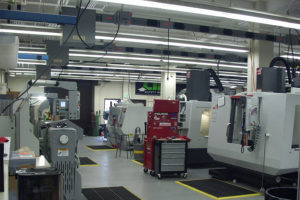 A modern facility for learning how to produce metal products, this lab contains full-size, industrial-quality metal casting, welding and machining equipment. Much of the equipment is new and includes computer-controlled equipment for learning computer numerical control (CNC) programming.
A modern facility for learning how to produce metal products, this lab contains full-size, industrial-quality metal casting, welding and machining equipment. Much of the equipment is new and includes computer-controlled equipment for learning computer numerical control (CNC) programming.
Lab software includes:
- Computer Aided Design: AutoCAD, Inventor, SolidWorks, Fusion 360.
- Structural Calculations: Visual Analysis Edu, MD Solids.
- CNC: Fusion 360.
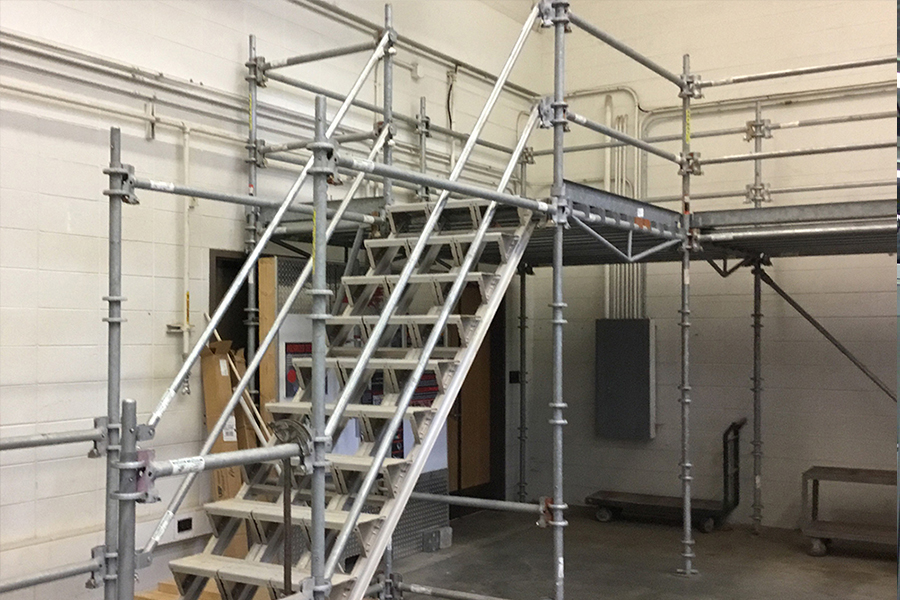 A teaching/research facility with state-of-the-art equipment for testing the performance and durability of construction materials and structures. The lab includes a teaching area for environmental-health hazards that students are likely to face in industry.
A teaching/research facility with state-of-the-art equipment for testing the performance and durability of construction materials and structures. The lab includes a teaching area for environmental-health hazards that students are likely to face in industry.
Lab software includes:
- Structural Calculations: Data Studio, Logger Pro, Visual Analysis Edu, MD Solids, Convert.
 This laboratory is a support room for students, faculty, and projects using Additive Manufacturing (3D Printing). There are eight (8) 3D printers offering a variety of materials and capabilities. This space also has 3D filament testing capabilities. The secondary function is as a small format research space for undergraduate, graduate, and faculty research.
This laboratory is a support room for students, faculty, and projects using Additive Manufacturing (3D Printing). There are eight (8) 3D printers offering a variety of materials and capabilities. This space also has 3D filament testing capabilities. The secondary function is as a small format research space for undergraduate, graduate, and faculty research.
Lab software includes:
- Computer Aided Design: Inventor, SolidWorks, Fusion 360, and G-Code generators.
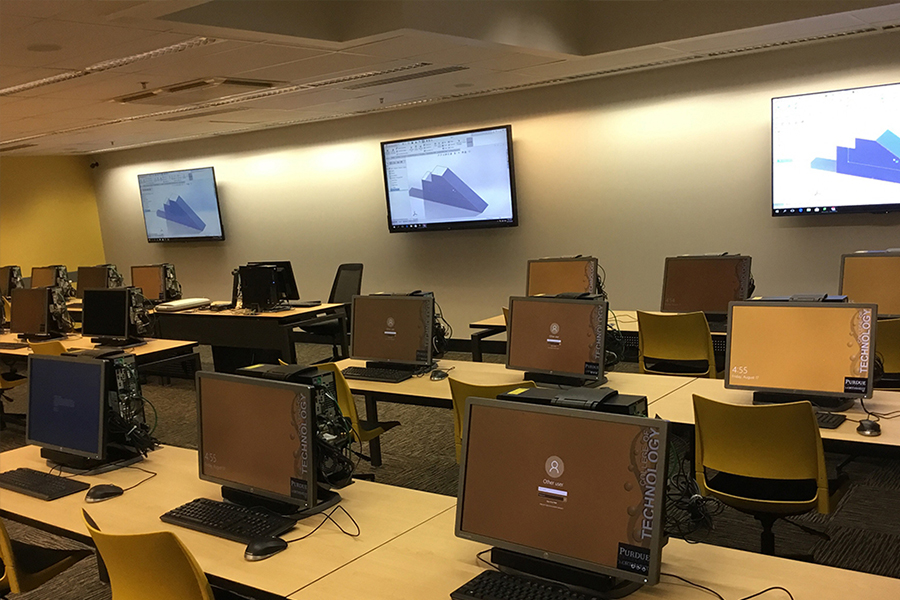 This lab offers ideal facilities for hands-on training covering computer-aided Design.
This lab offers ideal facilities for hands-on training covering computer-aided Design.
Lab software includes:
- Computer Aided Design: AutoCAD, Inventor, CREO Parametrics, SolidWorks, Fusion 360.
- Structural Calculations: Visual Analysis Edu, MD Solids.
- CNC: Fusion 360.
- Simulation: Automation Studio, B&R Automation, Simio.
3D Rendering/Animation: 3DS Max, Paint.
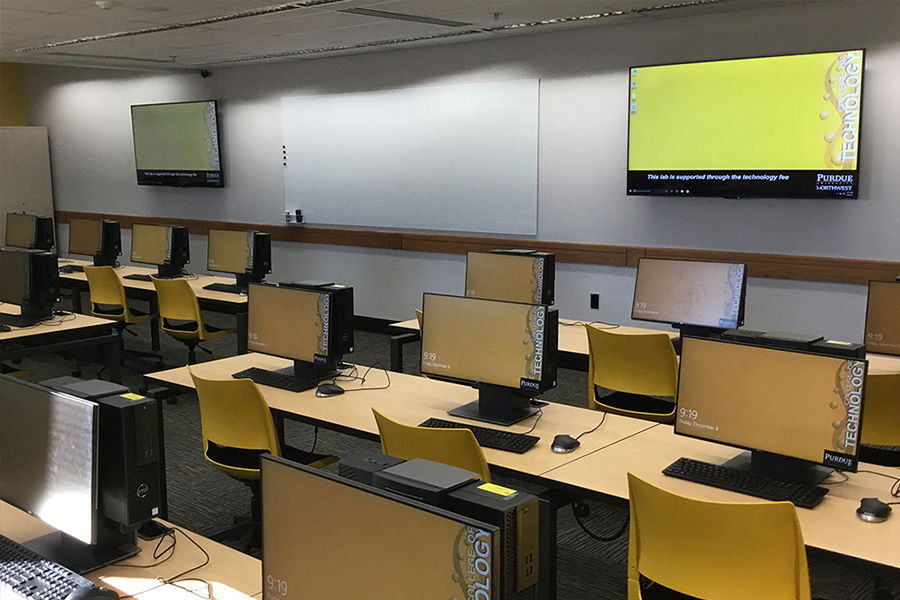 This lab offers ideal facilities for hands-on training on computer numerical control (CNC) programming, additive manufacturing, rapid prototyping and 3-D parametric design.
This lab offers ideal facilities for hands-on training on computer numerical control (CNC) programming, additive manufacturing, rapid prototyping and 3-D parametric design.
Lab software includes:
- Computer Aided Design: AutoCAD, Inventor, CREO Parametrics, SolidWorks, Fusion 360.
- Structural Calculations: Visual Analysis Edu, MD Solids.
- CNC: Fusion 360.
- Simulation: Automation Studio, B&R Automation, Simio.
- 3D Rendering/Animation: 3DS Max, Paint.
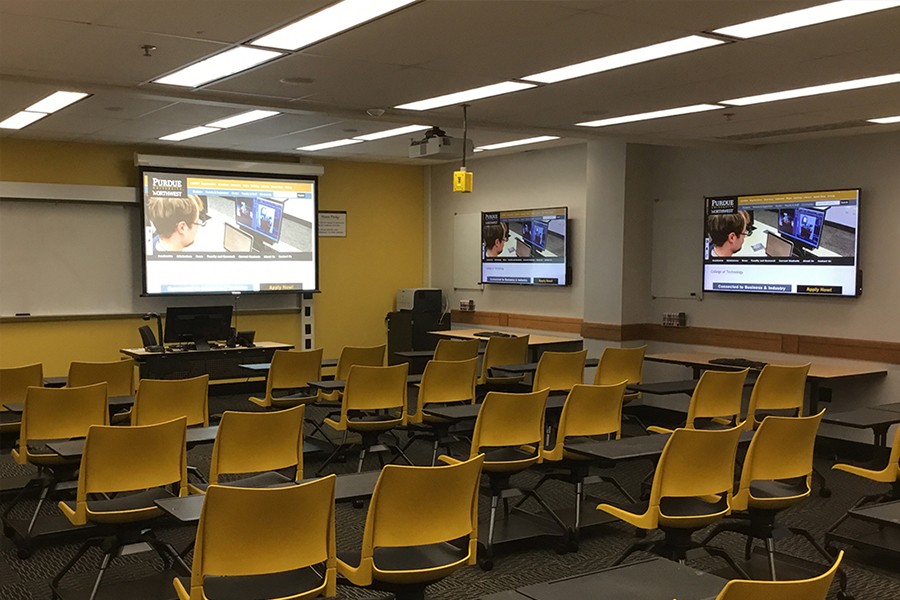 A hands-on teaching lab covering topics in Lean Six Sigma, Ergonomics and RFID, equipped with 30 seats that can be reconfigured for team projects covering industrial and manufacturing engineering technology.
A hands-on teaching lab covering topics in Lean Six Sigma, Ergonomics and RFID, equipped with 30 seats that can be reconfigured for team projects covering industrial and manufacturing engineering technology.
Lab software includes:
- Statistics: Minitab and QI Macros.
- Simulation: Simio.
- Project Management: MS Project and MS Visio.
- Structural Calculations: Visual Analysis and MD Solids.
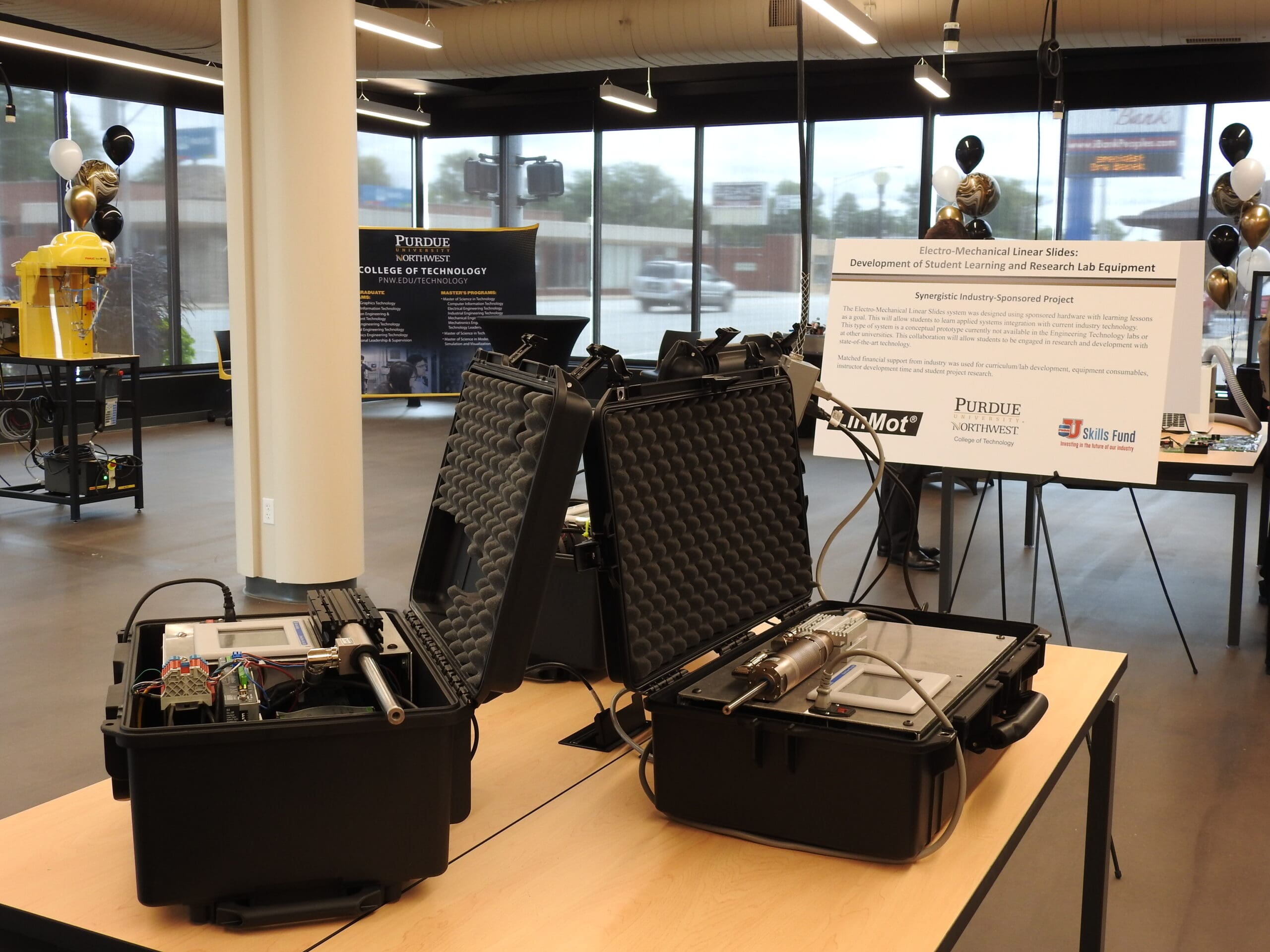 The David Roberts Center for Innovation and Design, located on Indianapolis Boulevard just a few blocks west of the PNW Hammond Campus.
The David Roberts Center for Innovation and Design, located on Indianapolis Boulevard just a few blocks west of the PNW Hammond Campus.
The goal of the 4,500-square-foot, technology-driven facility is to promote collaborative efforts with key industry partners and pursue faculty grantsmanship and scholarly work. The Center will support industry-sponsored senior design projects and provide the opportunity for students to work as an interdisciplinary team. It will advance applied research and foster innovation.
The Center is named in recognition of David Roberts for his significant gifts to Purdue Northwest. Roberts, a graduate of Purdue Northwest, served as the chairman, president and chief executive officer of Carlisle Companies, Inc.
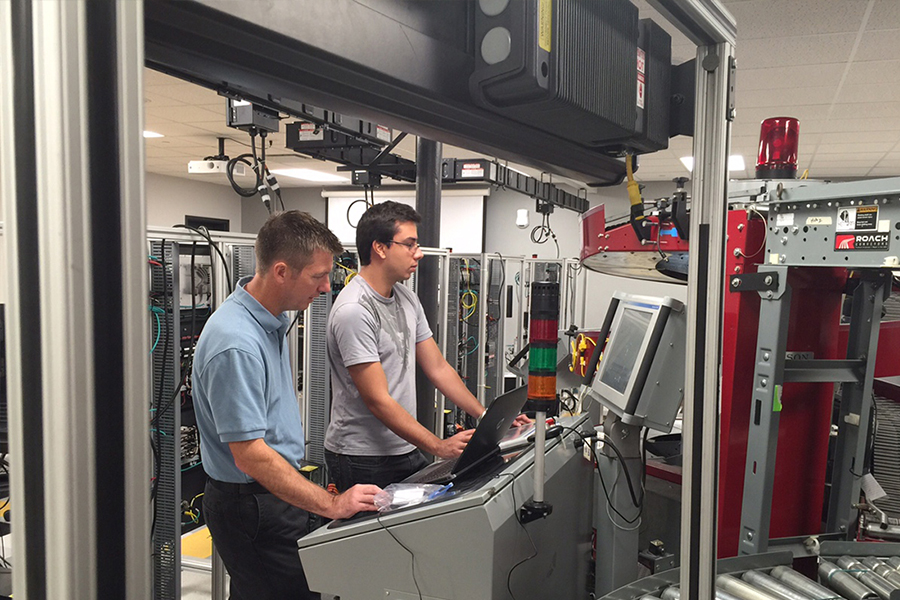 Operated by the College of Technology, this 18,000-square foot facility provides state-of-the-art laboratories with advanced manufacturing-training equipment including robots, programmable logic controllers (PLCs), electrical and mechanical machinery.
Operated by the College of Technology, this 18,000-square foot facility provides state-of-the-art laboratories with advanced manufacturing-training equipment including robots, programmable logic controllers (PLCs), electrical and mechanical machinery.
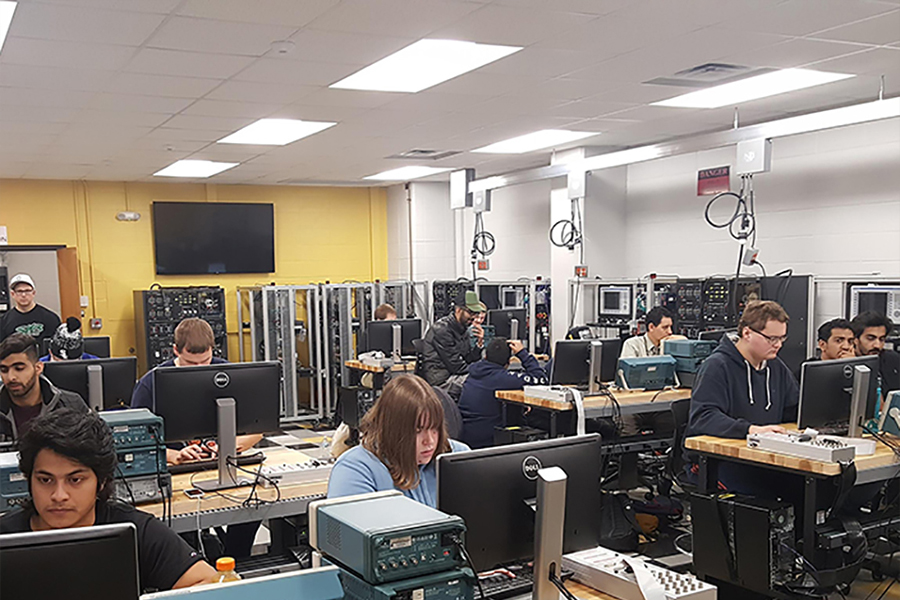 This lab provides a wide variety of process control and instrumentation experiments, including easy access to three-phase AC as well as variable-output high voltage DC power supplies. Nine workstations are equipped with Tektronix 50 MHz oscilloscopes, Tektronix 2 MHz signal generators, DMMs and +/-20 VDC triple output power supplies. Seven workstations are equipped with Rockwell PLC Trainers, eight workstations with LabVolt Power Trainers and 12 B&R PLC Trainers.
This lab provides a wide variety of process control and instrumentation experiments, including easy access to three-phase AC as well as variable-output high voltage DC power supplies. Nine workstations are equipped with Tektronix 50 MHz oscilloscopes, Tektronix 2 MHz signal generators, DMMs and +/-20 VDC triple output power supplies. Seven workstations are equipped with Rockwell PLC Trainers, eight workstations with LabVolt Power Trainers and 12 B&R PLC Trainers.
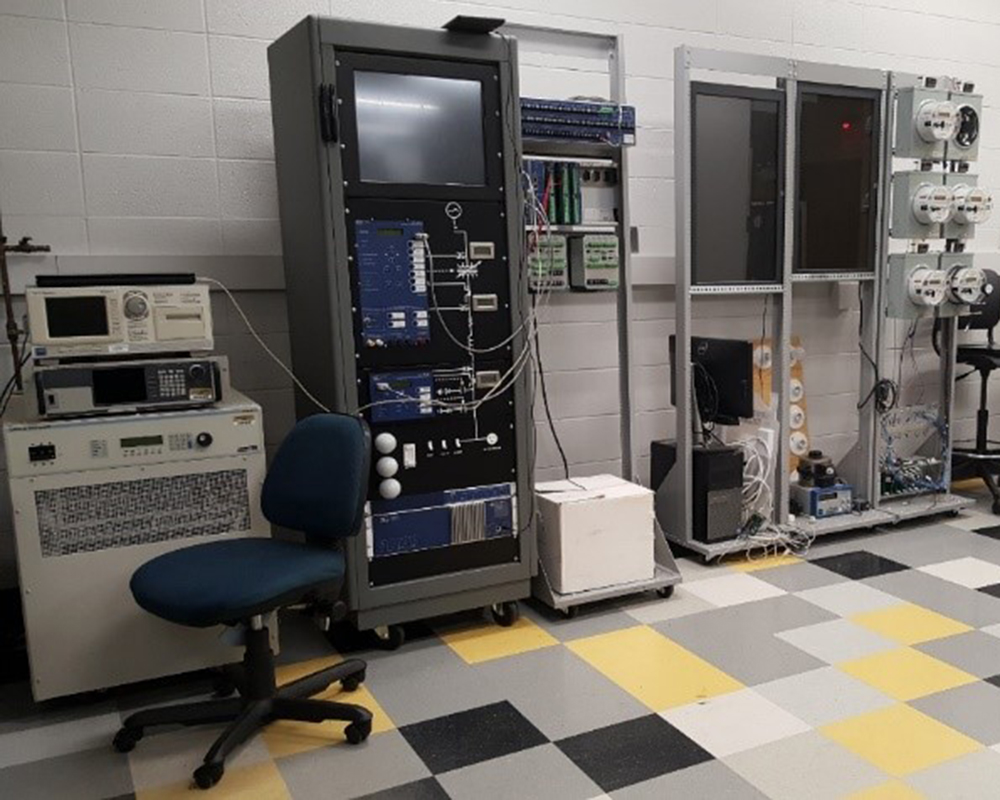 Smart Systems Integration Lab (SSIL) provides research equipment and resources from the Consortium for Rapid Smart Grid Impact- CRSGI (www.pnw.edu/ET) for smart grids and IoT platform development and learning. Industry partners Landis+Gyr and Schweitzer Engineering Labs (SEL) assist education and research, providing technical support and state of the art Advanced Metering Infrastructure (AMI) platform and real-world smart grid devices, such as Volt/Var controllers, Synchrophasors, Smart Meters, and Grid Controllers.
Smart Systems Integration Lab (SSIL) provides research equipment and resources from the Consortium for Rapid Smart Grid Impact- CRSGI (www.pnw.edu/ET) for smart grids and IoT platform development and learning. Industry partners Landis+Gyr and Schweitzer Engineering Labs (SEL) assist education and research, providing technical support and state of the art Advanced Metering Infrastructure (AMI) platform and real-world smart grid devices, such as Volt/Var controllers, Synchrophasors, Smart Meters, and Grid Controllers.
A maker’s space for IoT platforms allows integration of IoT sensors, edge devices, custom IoT Platform development, and commercial cloud service integration to develop solutions for Industry 4.0, Energy Management 4.0, Livestock 4.0, Manufacturing 4.0, etc. Industry mentors from Cisco Systems and Microsoft guide student projects. Collaborative international research opportunities with students from the State University of Sao Paulo, Brazil, are available. Prof. Athula Kulatunga directs applied research in this lab.
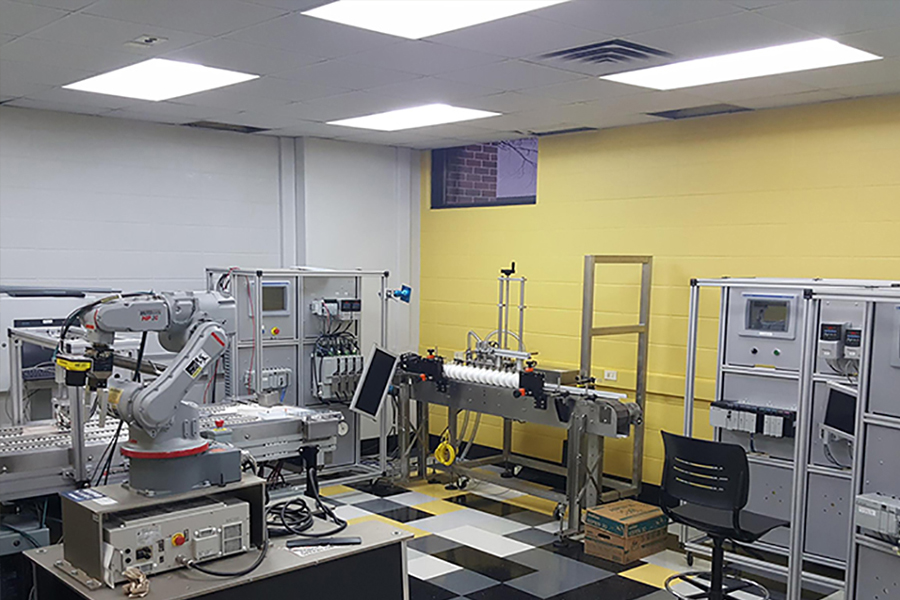 This laboratory offers hands-on experience in the complex equipment that produces and packages items consumers purchase daily. Students learn advanced programming techniques, interfacing automated equipment, sensor design, machine design and troubleshooting in this lab. There are four Rockwell PLC Trainers with a robotic arm, HMI, bottle-capping station and pneumatic conveyor system in the lab.
This laboratory offers hands-on experience in the complex equipment that produces and packages items consumers purchase daily. Students learn advanced programming techniques, interfacing automated equipment, sensor design, machine design and troubleshooting in this lab. There are four Rockwell PLC Trainers with a robotic arm, HMI, bottle-capping station and pneumatic conveyor system in the lab.
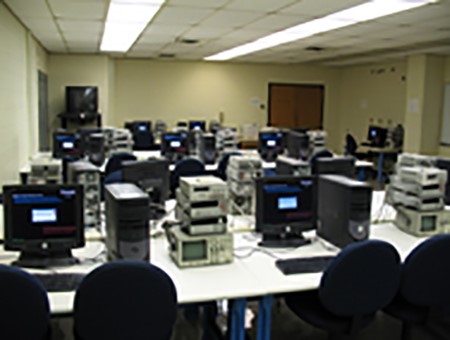 A teaching lab with 19 computers and 19 student stations where two students can work as a team. Each station has a digital multi-meter, power supply, arbitrary function generator and an oscilloscope for various circuit setups and electrical testing.
A teaching lab with 19 computers and 19 student stations where two students can work as a team. Each station has a digital multi-meter, power supply, arbitrary function generator and an oscilloscope for various circuit setups and electrical testing.
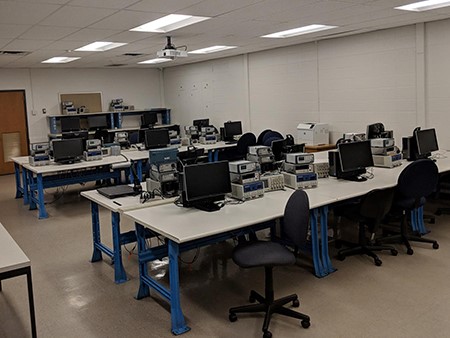 A teaching lab with 19 computers and 19 student stations where two students can work as a team. Each station has a digital multi-meter, power supply, arbitrary function generator and an oscilloscope for various circuit setups and electrical testing. AMATROL’s state of the art process control trainers with real-world devices provide hands-on learning related to controlling process variables such flow, level, and temperature using PI and PID controllers.
A teaching lab with 19 computers and 19 student stations where two students can work as a team. Each station has a digital multi-meter, power supply, arbitrary function generator and an oscilloscope for various circuit setups and electrical testing. AMATROL’s state of the art process control trainers with real-world devices provide hands-on learning related to controlling process variables such flow, level, and temperature using PI and PID controllers.
Cadence® University Program Member
This page provides information about the Cadence design tools. Cadence design tools are used for classes and research in the Purdue University Northwest Engineering and Engineering Technology Departments.
Cadence software is used to verify the measured DC and AC responses of various circuits in a lab environment. With the aid of Design Entry CIS, students obtain circuit-related parameters such as nodes’ voltages, currents, phase delays and time constants. Such software is also used to study the I-V characteristics of electronic components including transistors and diodes. On a bigger scale, Cadence design tools are utilized by students performing senior design projects to optimize circuit response and import schematics into printed circuit board (PCB) layouts
Classes utilizing Cadence products:
- ECE 20100 – Linear Circuit Analysis I
Volt-ampere characteristics for circuit elements; independent and dependent sources; Kirchhoff’s laws and circuit equations. Source transformations; Thevenin’s and Norton’s theorems; superposition, step response of 1st order (RC, RL) and 2nd order (RLC) circuits. Phasor analysis, impedance calculations, and computation of sinusoidal steady state responses. Instantaneous and average power, complex power, power factor correction, and maximum power transfer. Instantaneous and average power. - ECE 20200 – Linear Circuit Analysis II
Use of Laplace Transform techniques to analyze linear circuits with and without initial conditions. Characterization of circuits based upon impedance, admittance, and transfer function parameters. Determination of frequency response via analysis of poles and zeros in the complex plane. Relationship between the transfer function and the impulse response of a circuit. Use of continuous time convolution to determine time domain responses. Properties and practical uses of resonant circuits and transformers. Input – output characterization of a circuit as a two-port. Low and high-pass filter design. - ECE 20700 – Electronic Measurement Techniques
Experimental exercises in the use of laboratory instruments. Voltage, current, impedance, frequency, and wave form measurements. Frequency and transient response. Elements of circuit modeling and design. - ECE 27500 – Analog and Digital Electronics
Electronic amplifiers; operational amplifier circuits; diode characteristics and circuit applications; bipolar junction transistor (BJT) and MOSFET characteristics, operating modes biasing, linear amplifier configurations; ideal characteristics of logic devices; basic logic devices using BJTs and MOSFETs. - ECE 23500 – Electronics Systems
Topics in multistage amplifiers, feedback amplifiers, oscillators, operational amplifiers, analog systems, power amplifiers and systems, communication systems.
- ECE 20100 – Linear Circuit Analysis I
Cadence® is a registered trademark of Cadence Design Systems, Inc., 2655 Seely Avenue, San Jose, CA 95134.
Last Modified: September 24, 2020 by David McLees
Simio is used by students in the technology programs to learn how to model and simulate large or complex systems so that changes can be implemented by using objective analysis of accurate behavior predictions.
Purdue University Northwest, College of Technology uses Simio simulation software under a grant from Simio LLC (www.simio.com).